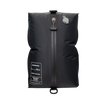We’ve worked from mountain towns, beach shacks, back-alley cafés, and yes, the occasional questionable airport lounge—and one thing we know for sure? Not all countries are built the same when it comes to living and working remotely. In this guide to the best countries for digital nomads in 2025, we’re not throwing darts at a map or copying someone else’s bucket list—we’re giving you the real deal from firsthand experience. Whether you’re chasing tax perks, better weather, or just a life less ordinary, consider this your compass for where to go next—and how to show up like a pro.

What You Need to Know Before You Go
We’re all about spontaneity—but when it comes to working remotely abroad, you don’t want to wing it. Before you grab that one-way ticket, pack your suitcase, and start dreaming of beachfront Zoom calls or mountain-top coworking, there are a few non-negotiables you’ll want to lock down first.
Visas: More Than Just a Stamp
Not all visas are created equal, and yes—it matters. Digital Nomad (DN) Visas are your golden ticket. They’re built for remote workers earning income from foreign companies and are now offered in hotspots like Portugal, Estonia, Spain, and beyond. Expect income requirements and mandatory health insurance, but fewer headaches than old-school work permits.
Then there are Freelancer Visas, which are common in places like Germany, for independent pros with local clients. Tourist visas? Technically, working on one is a no-go. That said, in places like Southeast Asia or parts of Latin America, it’s often overlooked—until it’s not. Be smart, and check the rules before you land.
Taxes & Getting Paid
The 183-day rule is real—stay in one place too long and you might become a tax resident. That means local taxes, accountants, and possibly some very confusing paperwork. Always look up double taxation treaties between your home country and wherever you’re headed. And for getting paid, skip the wire transfer drama. Use digital tools like Wise, Payoneer, or Deel to move money globally with less stress and fewer fees.
Health Insurance Isn’t a Maybe
Almost every digital nomad visa requires international health insurance, and even if it didn’t, you’d want it. A sprained ankle in Thailand or a stomach bug in Colombia without coverage? Not ideal. Go for a plan that covers emergencies, not just check-ups, and make sure it travels with you.
Time Zones: Choose Wisely
You’re not just picking a location for your remote work—you’re picking a timezone. Latin America is seamless if you’re working U.S. hours. Europe pushes you into late afternoon calls, but gives you slow, beautiful mornings. Southeast Asia? It’s for night owls and teams that live asynchronously. Time zone friction can kill your flow—or your sleep—so map your life before you map your route.
Southeast Asia: The OG Digital Nomad Playground
If there’s a capital of the digital nomad world, Southeast Asia’s wearing the crown. It’s affordable, flavorful, and buzzing with remote workers who’ve swapped commutes for coconut shakes. The cost of living is low, the Wi-Fi is decent (in most places), and the lifestyle is tough to beat. That said, tourist visas aren’t made for remote work, and while enforcement is often lax, you’re technically skating a legal gray area. Visa runs, extensions, and creative planning are part of the package. Worth it? For most nomads—absolutely. Just go in with your eyes open.
Thailand
Thailand remains the undefeated champ of the remote work world thanks to its tropical charm, affordability, and remote-worker-friendly infrastructure, though you'll need to dance around visa runs or snag a long-stay option.
- Visa: Tourist visa (60 days + 30-day extension); LTR visa (10 years, but strict income criteria).
- Cost of Living: $1,000–$1,500/month
- Hotspots: Chiang Mai (coworking heaven), Bangkok (big city energy), Koh Phangan (yoga-meets-techie).
- Best Time: November to February (dry season, not too hot).
-
Challenges: Visa runs, tricky time zones for US work.
Vietnam
If Vietnam isn't on your radar yet, it should be. This Southeast Asian sleeper hit offers beach towns, fast internet, and some of the world’s best food for less than your monthly coffee bill back home.
- Visa: 30–90 day tourist visas; no DN visa yet.
- Cost of Living: $800–$1,200/month.
- Best Cities: Da Nang (clean, beachy, balanced), Ho Chi Minh (fast-paced), Hoi An (chill + photogenic).
- Perks: Fast Wi-Fi, beach-meets-city lifestyle, street food heaven.
- Best Time: February to April (pleasant temps, minimal rain).
- Challenge: Not legal to work remotely on a tourist visa, but lightly enforced.
Indonesia (Bali)
Bali has evolved from a surf hideaway into a full-on digital nomad ecosystem, especially in Canggu, where laptops outnumber surfboards at breakfast.
- Upcoming Visa: 5-year DN visa launching (2025), tax-free on foreign income.
- Income Requirements: $3K/month or $120K in savings.
- Cost of Living: $900–$2,000/month depending on luxury.
- Hotspots: Canggu (surf/remote work capital), Ubud (yoga, jungle, Zen).
- Vibe: Huge nomad community, wellness-focused, excellent coworking.
- Best Time: May to September (dry season, best surf).
Philippines
The Philippines offers a slower, island-based lifestyle, best for surf-lovers, divers, or those chasing a less corporate vibe.
- Visa: 12-month renewable DN visa, $24K/year income.
- Cost of Living: $700–$1,400/month.
- Best For: Island lovers—check out Siargao for laid-back surf vibes.
- Bonus: English-speaking, low visa hassle.
- Best Time: December to May (dry season, festivals galore).
Malaysia
Kuala Lumpur brings you skyscrapers, rooftop pools, jungle hikes, and arguably the best food scene in Asia, without Bali’s crowds or Singapore’s prices.
- Visa: New DE Rantau Nomad Pass (up to 1 year); $24K/year income.
- Cost of Living: $800–$1,500/month.
- Pros: Modern infrastructure, great transportation, multicultural, and English-friendly.
- Bonus: KL is an international flight hub, making weekend getaways across Asia stupid easy.
- Best Time: May to July (less rain, clear skies).

Southeast Asia remains a top choice for digital nomads chasing low costs, big flavor, and a built-in global community. Just pack some visa flexibility—paradise comes with a bit of paperwork.
From Tacos to Tango: A Nomad’s Guide to the Americas
Close time zones to the US and relatively lax visa rules make this a prime zone—just keep eye on safety and rising costs.
Mexico
Mexico is the de facto launchpad for many US-based nomads—and for good reason. From the chaotic charm of Mexico City to the mellow colonial magic of Oaxaca, there’s a rhythm for everyone. It's easy to get in (hello, six-month tourist visa), affordable outside tourist traps, and rich with coworking cafes, mezcal tastings, and tacos at 2 am.
- Visa: 6-month tourist visa standard, or Temporary Residency (~$2,600/month income proof).
- Cost of Living: $900–$2,000/month depending on region.
- Top Cities: CDMX (cosmopolitan), Oaxaca (cultural), Mérida (safe + hot), San Luis Potosí (off the radar).
- Pros: Affordable, vibrant, diverse.
- Cons: Rising prices in expat-heavy zones like Tulum and Condesa.
- Best Time: November to March (dry season, cooler temps).
Colombia
Colombia has transformed into one of South America's top digital nomad destinations. Medellín in particular is a hit: eternal spring weather, modern infrastructure, and a buzzing expat vibe. Cost of living is low, visas are accessible, and the mountain views from your rooftop coworking space? Chef's kiss.
- Visa: 2-year Digital Nomad Visa; only $680/month income required.
- Cost of Living: $800–$1,400/month.
- Top Cities: Medellín (DN central), Cali (underrated), Bogotá (big city meets colonial core).
- Vibe: Affordable, energetic, fast-growing remote work scene.
- Watch Out For: Petty theft in big cities, expat burnout in overcrowded areas.
- Best Time: December to March (dry season, sunny Andes vibes).
Argentina
Argentina is what happens when Europe and Latin soul have a beautiful, messy lovechild. Buenos Aires is still a gem—culturally rich, shockingly affordable due to inflation, and filled with creative energy. Wine, steak, tango, and a very forgiving exchange rate make this a prime base for digital creatives or slow travelers.
- Visa: 180-day DN visa; renewable.
- Cost of Living: $700–$1,200/month (especially cheap with USD).
- City Base: Buenos Aires—art, cafés, nightlife until 4am.
- Perks: Friendly locals, strong DN culture, cost-effective living.
- Cons: Spotty internet outside major cities, inflation chaos.
-
Best Time: March to May (fall) or September to November (spring).
Uruguay
Quiet, clean, and coastal—Uruguay is South America’s best-kept secret. Montevideo offers European-level safety and healthcare with a Latin American flavor. It’s more expensive than neighboring countries, but if you want laid-back vibes, solid infrastructure, and easy visa routes, Uruguay delivers.
- Visa: 6–12 month Digital Nomad Permit.
- Cost of Living: $1,200–$2,000/month.
- What to Expect: Chill beach towns, stable economy, low crime.
- Why It Works: No drama, just mate tea, sunsets, and decent Wi-Fi.
- Best Time: November to March (beach season).
Panama
Panama hits the sweet spot between U.S.-style convenience and tropical proximity. With strong infrastructure, a strategic location, and a DN visa that skips income tax on foreign earnings, it’s ideal for financially savvy remote workers.
- Visa: 6–24 months DN visa via local lawyer; $3,000/month income proof.
- Cost of Living: $1,500–$2,500/month.
- Perks: No foreign income tax, fast internet, good hospitals.
- Cons: Not the cheapest; lacksthe charm of neighboring countries.
- Best Time: Mid-December to April (dry season).
Brazil
If you want sunshine, samba, and scenery, Brazil offers affordable city life and an exciting culture—but plan ahead. Brazil’s remote work visa is newer, but it’s pretty welcoming. Beach life in Florianópolis, startup buzz in São Paulo, and nightlife in Rio—it’s all here. But this isn’t a low-effort destination. Portuguese helps, infrastructure varies, and safety can be a concern in big cities. Still, Brazil rewards those who lean in.
- Visa: DN visa available; $1,500/month income or $18,500 savings required.
- Cost of Living: $1,200–$2,000/month.
- Cities: Florianópolis (surf + chill), São Paulo (business meets culture), Rio de Janeiro (iconic energy).
- Best Time: May to October (dry season, lower tourist density).
- Strengths: Diverse, fun, high quality of life—if you pick your spots.
-
Challenges: Safety varies wildly; bureaucracy is real.

If you want to work in real-time with the U.S., enjoy vibrant culture, and stretch your dollar without sacrificing lifestyle, Latin America is the move. From the colorful chaos of Mexico City to the low-key beaches of Uruguay, the region offers every flavor of remote life, with fewer legal hoops and a lot more personality.
Europe for Digital Nomads: High Standards, Higher Rewards
Surprisingly, Europe’s become a digital nomad hotspot. Long seen as too pricey or bureaucratic, it's now welcoming remote workers with tailored visas, tax perks, and buzzing coworking scenes. The tradeoff? A bit more paperwork and higher income requirements—but the payoff is world-class lifestyle, infrastructure, and weekend getaways across borders.
Portugal
Lisbon has it all: cobblestones, cafés, coworking, and coastline. It’s arguably the top EU destination for digital nomads who like old-world charm with new-world startup energy.
- Visa: 1-year DN visa; €2,800+ monthly income. Renewable up to 5 years.
- Costs: Lisbon ~$2,000, Porto ~$1,400/month.
- Vibe: Beautiful, safe, and friendly with mild weather and great coffee culture.
- Bonus: Excellent train access and quick flights across Europe—perfect for the weekend wanderer.
-
Best Time: April to June, or September to October.

Spain
With tapas, beaches, and good weather, Spain attracts nomads in search of balance. The new visa makes it easier to go legit.
- Visa: DN visa (2023); €28K/year income, tax perks for 4 years.
- Costs: $1,500–$2,200/month.
- Pros: Work-life balance meets tapas culture.
- Cities: Valencia (sunny + cheap), Barcelona (cosmopolitan), Seville (culture).
-
Best Time: March to June, September to November.
Croatia
This Adriatic dream offers a perfect blend of beach, old-world towns, and remote worker infrastructure.
- Visa: 1-year residence for nomads; $2,700/month income.
- Costs: $1,200–$2,000/month.
- Scene: Adriatic coast, historic towns, rising expat population.
- Best Cities: Split, Zadar, Dubrovnik
- Best Time: April to June, September.
Romania
Romania is the quiet workhorse of Eastern Europe: fast Wi-Fi, safe cities, and a no-nonsense DN visa program.
- Visa: DN visa available; simple process, but the income requirement is ~$3,700/month.
- Cost of Living: $900–$1,300/month.
- Perks: Fastest internet in the EU, low prices, safe, underrated beauty.
- Best City: Cluj-Napoca or Bucharest.
- Best Time: May to September.
Albania
Albania is what happens when you blend Balkan beauty with Southeast Asian prices. It’s one of Europe’s most underrated digital nomad hubs—no Schengen visa drama, a low cost of living, and beach towns that feel like Croatia ten years ago. English is increasingly common, the food is Mediterranean-meets-Balkan, and most expats say it’s like discovering a travel cheat code.
- Visa: Visa-free for many countries (365 days for U.S. citizens); simple temporary residency options available.
- Cost of Living: $900–$1,300/month.
- Top Cities: Tirana (urban + culture), Saranda (beach town), Vlorë (seaside + chill).
- Perks: No Schengen limits, low taxes, friendly locals, easy pace.
- Best Time: May to October (Mediterranean summer without the euro pricing).
Montenegro
Montenegro is still flying under the radar, but not for long. This Balkan beauty offers fjord-like bays, medieval towns, and stunning national parks—plus one of the easiest visa policies in Europe. While it doesn’t have a dedicated digital nomad visa yet, many nationalities (including the U.S.) can stay 90 days visa-free.
- Visa: 90-day visa-free for many countries; renewable with exit/entry.
- Cost of Living: $1,000–$1,500/month.
- Top Spots: Kotor (historic + jaw-dropping), Budva (beach nightlife), Tivat (luxury marina life).
- Perks: Coastal Europe without the EU price tag, stunning scenery, and easy border hopping.
- Best Time: May to September (sunshine, sailing, outdoor cafés).
Nomad Wildcards: High-End, High-Reward Destinations
These aren’t your usual DN hotspots—but they’re worth a look if you’ve got the income, flexibility, or just want something different. From tax-free luxury in Dubai to adventure-packed New Zealand, these places offer big lifestyle returns, with a few trade-offs.
UAE (Dubai)
A playground for high-earning nomads. Fast internet, zero income tax, and coworking spaces that feel like five-star lounges. It’s sleek, safe, and connected—if you can handle the price tag.
- Visa: 1-year DN visa, $5K/month income.
- Costs: $2,500–$5,000/month.
- Why Go: Global access, no taxes, luxury lifestyle.
- Best Time: Nov–Mar.
South Africa
Cape Town delivers mountains, surf, safaris, and strong coffee shop Wi-Fi. English-speaking, stunningly beautiful, and affordable, with some safety considerations.
- Visa: 1-year DN visa; $3K/month income.
- Costs: $1,200–$2,000/month.
- Best Time: Oct–Apr.
- Why Go: Natural beauty, urban culture, great value.

New Zealand
For nomads who want more nature and less hustle. Hiking, biking, and stunning landscapes come standard, but it’s remote and not cheap.
- Visa: Working Holiday (select countries).
- Costs: $2,000–$3,000/month.
- Best Time: Nov–Apr.
- Why Go: Outdoors paradise, chill lifestyle, ultra-safe.
Canada
Great for short-term stays and proximity to the U.S. Big cities are pricey, but smaller towns offer charm and lower cost.
- Visa: 6-month stay allowed; remote work permitted.
- Costs: $2,000–$3,500/month.
- Best Time: May–Oct.
-
Why Go: Safe, stable, excellent infrastructure.

These destinations aren’t for every nomad, but if you’ve got the means, they deliver premium living, serious scenery, and unique global access. And if you’re traveling with little ones in tow, let’s finally look at whether remote work and family life can actually coexist on the road.
Family-Friendly Nomad Spots
Yes, you can do the digital nomad thing with kids—and no, it doesn’t have to be chaos. A few countries stand out for making family life on the road not just doable, but genuinely enjoyable. Portugal and Spain strike a perfect balance of safety, healthcare, and a slower pace of life (plus, the playground-to-wine-bar ratio isn’t bad). Canada and New Zealand bring next-level nature and top-tier infrastructure to the table. For a softer landing in Asia, look to Malaysia and Thailand—especially Chiang Mai—where affordability, warm communities, and solid international schools help families find their rhythm fast.

Parting Notes
Where you choose to work remotely shapes how you live, move, and connect, and in 2025, the world’s more open (and competitive) than ever. From the beaches of Bali to the hills of Lisbon, there’s no one-size-fits-all answer—just the right fit for your pace, priorities, and passport. Whether you're chasing affordability, tax breaks, or a slower life with your family in tow, the best countries for digital nomads this year aren’t just places to work—they’re places to live well. Pack smart, plan sharper, and pick a base that works as hard as you do.





























